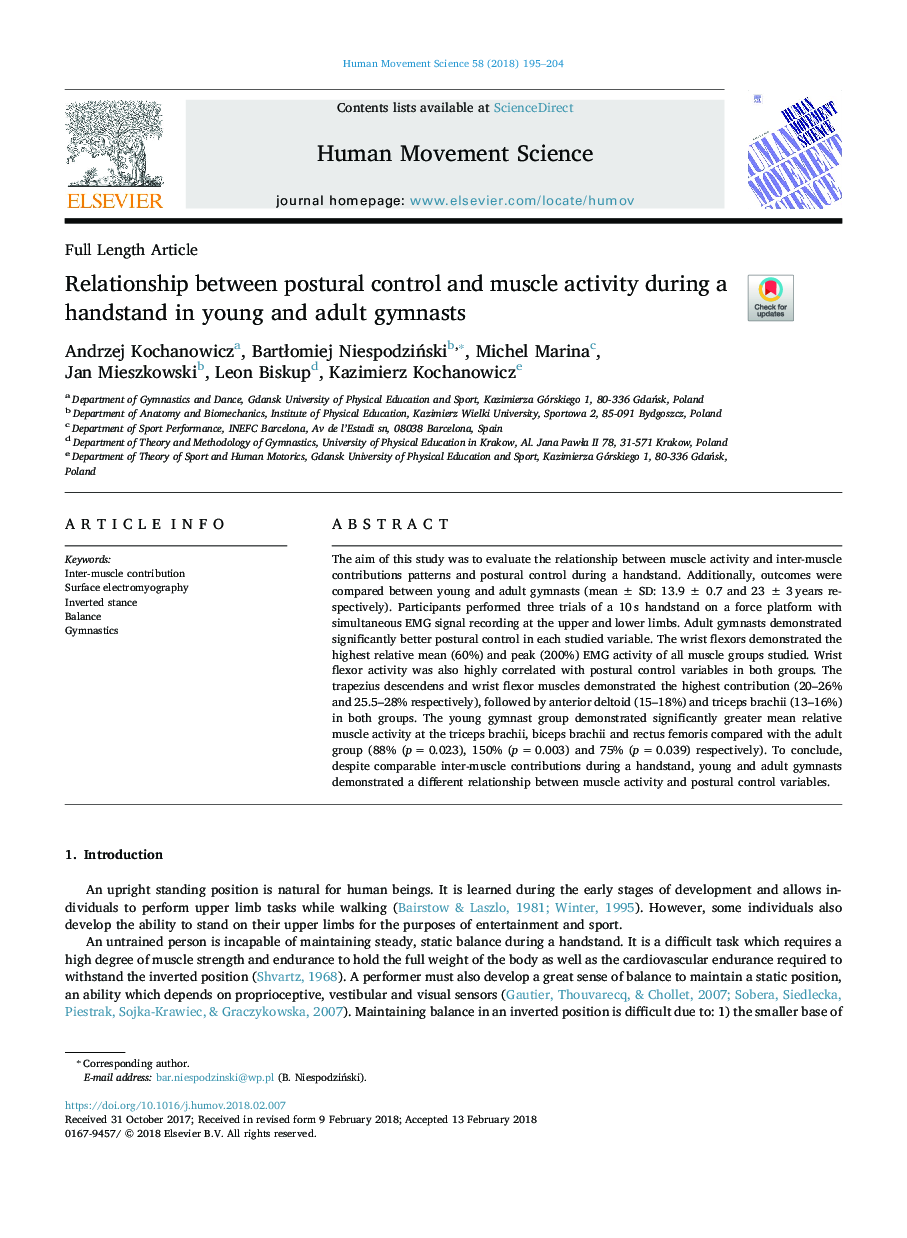| Article ID | Journal | Published Year | Pages | File Type |
|---|---|---|---|---|
| 7290935 | Human Movement Science | 2018 | 10 Pages |
Abstract
The aim of this study was to evaluate the relationship between muscle activity and inter-muscle contributions patterns and postural control during a handstand. Additionally, outcomes were compared between young and adult gymnasts (meanâ¯Â±â¯SD: 13.9â¯Â±â¯0.7 and 23â¯Â±â¯3â¯years respectively). Participants performed three trials of a 10â¯s handstand on a force platform with simultaneous EMG signal recording at the upper and lower limbs. Adult gymnasts demonstrated significantly better postural control in each studied variable. The wrist flexors demonstrated the highest relative mean (60%) and peak (200%) EMG activity of all muscle groups studied. Wrist flexor activity was also highly correlated with postural control variables in both groups. The trapezius descendens and wrist flexor muscles demonstrated the highest contribution (20-26% and 25.5-28% respectively), followed by anterior deltoid (15-18%) and triceps brachii (13-16%) in both groups. The young gymnast group demonstrated significantly greater mean relative muscle activity at the triceps brachii, biceps brachii and rectus femoris compared with the adult group (88% (pâ¯=â¯0.023), 150% (pâ¯=â¯0.003) and 75% (pâ¯=â¯0.039) respectively). To conclude, despite comparable inter-muscle contributions during a handstand, young and adult gymnasts demonstrated a different relationship between muscle activity and postural control variables.
Related Topics
Life Sciences
Neuroscience
Cognitive Neuroscience
Authors
Andrzej Kochanowicz, BartÅomiej NiespodziÅski, Michel Marina, Jan Mieszkowski, Leon Biskup, Kazimierz Kochanowicz,
